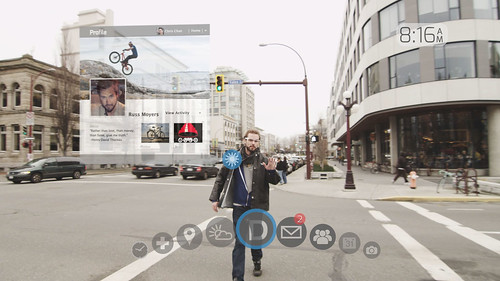Canadian Startup Deetectee Creates Unobtrusive Way to Identify Strangers
 Wearable technology is seen as the next big step in mobile computing, but with these new technologies come new security concerns.
Wearable technology is seen as the next big step in mobile computing, but with these new technologies come new security concerns.
A push by major tech corporations like Google and Facebook to implement facial recognition software into these new platforms has received wide criticism, as consumers grapple with the idea of being constantly identified without their consent.
A new Victoria-based startup, however, believes that they have a solution.
The idea came about when Edwin Braun, CEO of Cebas Visual Technologies, a special effects company, and President of Deetectee Microsystems Inc., set out to design a mobile gaming platform that would allow complete strangers in close proximity to play together.
“You cannot just go around tapping everyone on the shirt asking ‘do you want to play a game?” he says.
Trying to create an organic gaming experience with complete strangers, Braun researched existing technologies such as NFC, Bluetooth, and GPS. However none of these were effective in identifying a person within the range he was looking for.
His solution is called Single Burst Optical Recognition, which he developed over the course of a year alongside Brian Purdy, CEO of Deetectee. Its biggest advantage is that unlike facial recognition software, it can be turned off.
“I think we have a technology that could stop the evil right from the beginning,” says Braun. “Because if you look at facial recognition, for example, you cannot screw off your head. Once this technology is out there, you cannot take it back.”
Single Burst Optical Recognition is a patented technology that uses optical recognition software to identify individuals or objects within 20 meters, in any lighting condition.
Deetectee has developed a small, low-powered device that works in tandem with smartphones, tablets, or computers, and can identify other devices, but they believe there is a potential for Single Burst Optical Recognition to be integrated directly into wearable technologies, such as the Google Glass.
“Not only do you have the ability to accurately detect a device through this optical recognition capability, once the device is detected a query goes to a Deetectee server database in the cloud, and it retrieves the online identity of that device owner,” says John Plas, director of strategy and development for Deetectee. “That’s very important, because you’ve effectively separated the online identity and the device from each other.”
By downloading the Deetectee app and registering it with a Single Burst Optical Recognition enabled device, users can change security settings directly from their smartphones, tablets, or computer. For example, a speaker at a conference might want to switch their device to “professional mode,” which would allow the audience to view their LinkedIn profile and recent publications. That same speaker can later go to a bar and switch to “personal mode,” which would display their online dating profile to anyone interested.
The implications for this technology are endless, explains Braun, from hands free mobile payments to border security, healthcare to gaming, and of course, social media.
“We think our technology can be used in so many ways,” says Braun. “I just imagine what Facbeook could do with that. I can’t even envision what they would do with such a technology.”
Though still in its infancy, the Deetectee team hopes to see their technology integrated into the next generation of wearable devices, eliminating the need for more intrusive biometric identifiers such as facial recognition software.




